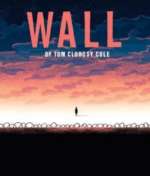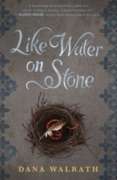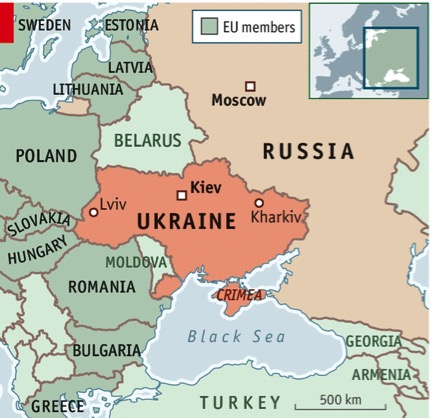by Yoo Kyung Sung, University of New Mexico, Albuquerque, NM
 Language binds the past to the present. With the advent of high-tech, wireless devices that is even more evident as people interact in new and unique ways reflecting rapid evolution in language. New words are born every day while other words slip into obscurity. In many ways, everyday language becomes a “fashion” as it mirrors social changes, trends, and contemporary issues. Historically linked language became really evident to me some weeks ago when I was watching a Korean reality show. An actor in his late 40’s used the word “Soviet” in place of Russia. When hearing this, other participants teased him as a veteran of the Ice Age. I took this episode as an opportunity to familiarize myself more with a broad range of Russian children’s literature. Some books, as in those by Eugene Yelchin who grew up in Soviet Russia, were written explicitly for a U. S. audience. Others were histories that filled in the gap from Imperial Russia to Soviet Russia. This week, I will introduce historical fiction that expands the reader’s view of Russia’s large influence on global history.
Language binds the past to the present. With the advent of high-tech, wireless devices that is even more evident as people interact in new and unique ways reflecting rapid evolution in language. New words are born every day while other words slip into obscurity. In many ways, everyday language becomes a “fashion” as it mirrors social changes, trends, and contemporary issues. Historically linked language became really evident to me some weeks ago when I was watching a Korean reality show. An actor in his late 40’s used the word “Soviet” in place of Russia. When hearing this, other participants teased him as a veteran of the Ice Age. I took this episode as an opportunity to familiarize myself more with a broad range of Russian children’s literature. Some books, as in those by Eugene Yelchin who grew up in Soviet Russia, were written explicitly for a U. S. audience. Others were histories that filled in the gap from Imperial Russia to Soviet Russia. This week, I will introduce historical fiction that expands the reader’s view of Russia’s large influence on global history.
The first set of books were informative and especially meaningful ones about the Berlin Wall. As WWII ended, Germany was split into four Allied occupation zones. The eastern section was ceded to Russian control while the Western section was divided among Great Britain, France, and the United States (McGill, 2009). Due to an increasing amount of “defections” from East Germany to West Germany, Soviet East Germany constructed a barbed wire and concrete fence. This was “spun” politically as an “antifacist bulwark.” There have not been many books for children and adolescents about the Berlin Wall despite the fact that it was an overarching symbol of the Cold War (History.com, 2009). Second Fiddle (2011) by Rosanne Parry illustrates stories after the Wall had just came down. In 2014, two more books set in that era were published. One was Wall (2014) by Tom Clohosy Cole. It depicts a father separated from his family when the wall was erected and highlights the anxiety and fear residents of Berlin experienced. It is one of a few picture books depicting the Berlin Wall. The simplicity of illustrations and readily accessible story line allows young readers to powerfully engage with the bigger idea of walls that separate people in other places around the world.
The other book is Going Over (2014) by Beth Kephart. This young adult book is a story of two teenagers in love, yet separated by barbed wire, a concrete wall, and a “killing zone” of fifty yards. The romance seems embedded to attract YA readers yet it still conveys the suspense for their safety that other family members must have felt. Personally, the perspective of these Turkish immigrants in the 1980’s was a bit of an eye-opener for me. The social injustices and poverty experienced by them invites the reader to ponder the human impact of hierarchical status present around the world. Bith books mediate the harsh images of Germany many readers may have of WWII Germany, the Holocaust, and the Hitler Youth by providing them a glimpse of a Germany torn apart by the Cold War. It adds to the larger historical continuum of German history.
 While Going Over (2014) portrays Turkish immigrants as the under-privileged minority group in Germany, another book, Like Water On Stone (2014) by Dana Walrath. reverses that. The Armenian genocide by the Turkish government occurred following WWI (my knowledge of geography increased when I realized that Armenia bordered Turkey). Walwrath’s grandparents were survivors of that in 1915. Between 1915 and 1918 the Armenian people were deported, expropriated, abducted, tortured, starved, and massacred (Giberovitch, 2014). One and a half million were killed and it has the distinction of being noted as the first modern genocide (Birazian, 2006). Like Water On Stone (2014) it is written in free verse and channels “old” history into a new and relevant story for younger readers. The author notes that tens of thousands of Armenians fled to Russia as a consequence. In 1920 Armenia was absorbed into the Soviet Union. Following the demise of the Soviet Union, Armenia became an independent nation on September 21, 1991. In all of these books, we can see Russia’s role in geopolitics. Like Daughter of War (2009) by Marsha Forchuk Skrypuch, Water on Stone (2014) will be a helpful and new addition to the discussion of the Armenian Genocide, not to mention the enhancing the larger context of global history and politics.
While Going Over (2014) portrays Turkish immigrants as the under-privileged minority group in Germany, another book, Like Water On Stone (2014) by Dana Walrath. reverses that. The Armenian genocide by the Turkish government occurred following WWI (my knowledge of geography increased when I realized that Armenia bordered Turkey). Walwrath’s grandparents were survivors of that in 1915. Between 1915 and 1918 the Armenian people were deported, expropriated, abducted, tortured, starved, and massacred (Giberovitch, 2014). One and a half million were killed and it has the distinction of being noted as the first modern genocide (Birazian, 2006). Like Water On Stone (2014) it is written in free verse and channels “old” history into a new and relevant story for younger readers. The author notes that tens of thousands of Armenians fled to Russia as a consequence. In 1920 Armenia was absorbed into the Soviet Union. Following the demise of the Soviet Union, Armenia became an independent nation on September 21, 1991. In all of these books, we can see Russia’s role in geopolitics. Like Daughter of War (2009) by Marsha Forchuk Skrypuch, Water on Stone (2014) will be a helpful and new addition to the discussion of the Armenian Genocide, not to mention the enhancing the larger context of global history and politics.
Other books that have settings in the USSR:
| Book | Nation | Historical Timeline | Format |
| Passage to Freedom (1941) | Lithuania | 1941 | picture book |
| Thanks to My Mother (1998) | Lithuania | 1941 | chapter book,p.256 |
| Between Shades of Gray (2011) | Lithuania | 1941 | chapter book
p. 344 |
| The Winter Horses (2014) | Ukraine | 1939-1945 | chapter bookp.274 |
| Silver Threads | Ukraine | picture book | |
| Prisoners in the Promised Land (2007) | Ukraine | 1914 | chapter book |
| A Time of Miracles(2010) | Georgia | Early 1990’sThe Soviet Union collapse | chapter bookp.243 |
| Sugar Kid: A Story of the Girl from the Last Century Told (2014) | Russian Child/ Kyrgyzstan (Kirgizia) camp | 1920-1970 | chapter bookp. 160Russian language |
Out of 15 Soviet Socialist Republics, only three were written U. S. audiences. The majority of the others dealt with WWII. Other than for Lithuania, Ukraine, and Georgia, the rest of the countries of the Soviet Bloc exist for younger readers only as informational texts. In essence, there is a real absence of contemporary realistic fiction for this region.
References
Birazian, K. (2006). The forgotten genocide NSSSA Leader, 20(2), 6-7.
History.Com. (2009). Berlin wall. Retrieved from http://www.history.com/topics/cold-war/berlin-wall
McGill, S. A. (2009). The Berlin Wall. Berlin Wall, 1.
I find it is always more helpful and engaging to understand world history through the lens of historical fiction with Russian connections. Whether Russia was a major role player in the story or was only a minor influence, it helps me to look at history I learned in new ways. As a unit children can experience history more powerfully if the build a timeline as they read the literature together. My experience in preparing this blog has strengthened my belief that Russia is connected much more to larger global historical events that we think. The lives of children (and childhood in general) continue to convince me of the importance of children’s stories and the power inherent in young people’s resiliency.
Please visit wowlit.org to browse or search our growing database of books, to read one of our two on-line journals, or to learn more about our mission.
- Themes: Russia, Yoo Kyung Sung
- Descriptors: Books & Resources, Student Connections, WOW Currents

